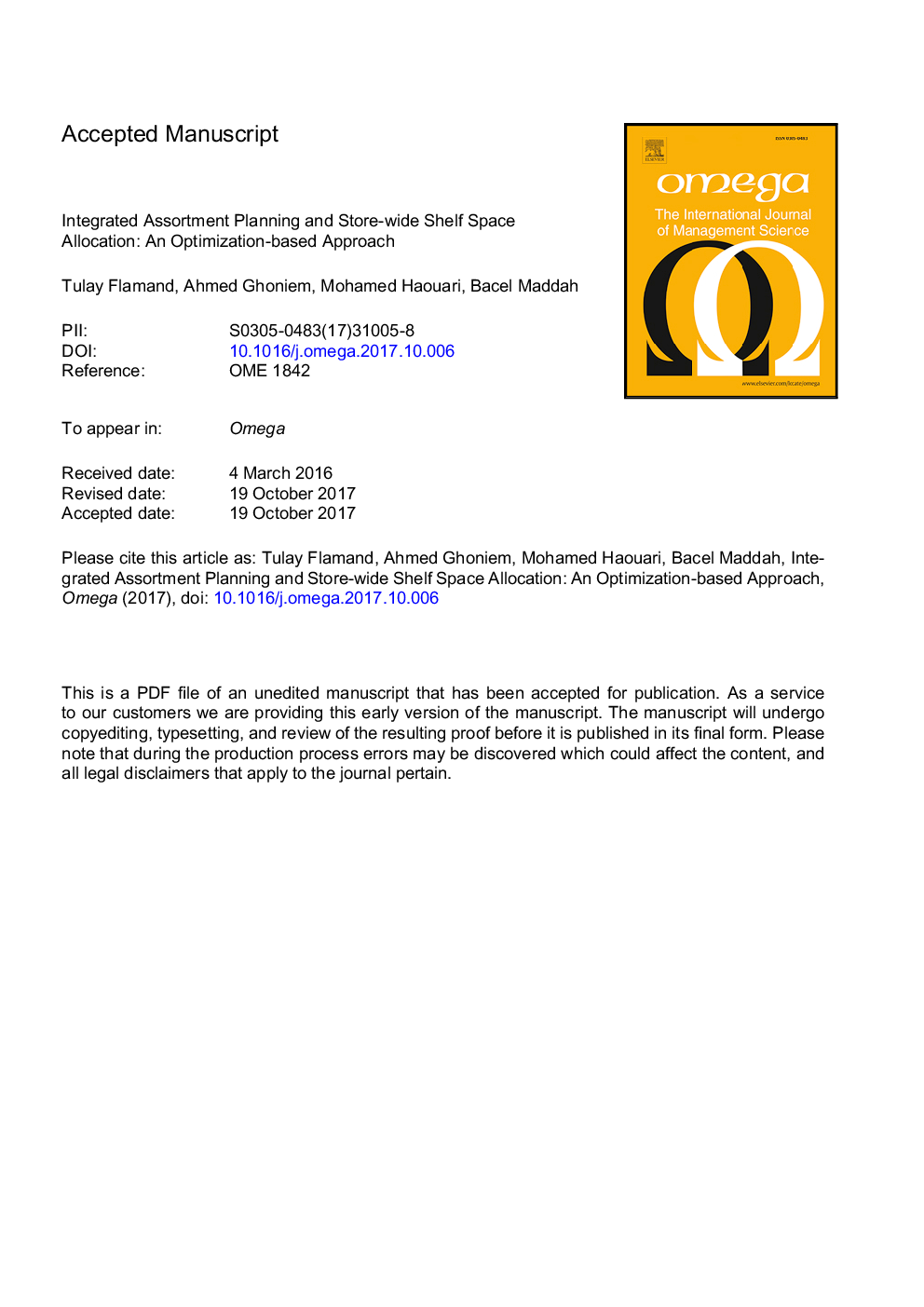| Article ID | Journal | Published Year | Pages | File Type |
|---|---|---|---|---|
| 8954690 | Omega | 2018 | 44 Pages |
Abstract
This paper investigates retail assortment planning along with store-wide shelf space allocation in a manner that maximizes the overall store profit. Each shelf comprises a set of contiguous segments whose attractiveness depends on the store layout. The expected profit accruing from allocating space to a product category depends not only on shelf segment attractiveness, but also on the profitability of product categories, their expected demand volumes, and their impulse purchase potential. Moreover, assortment affinities and allocation affinity/disaffinity considerations are enforced amongst certain pairs of interdependent product categories. A mixed-integer programming model is developed as a standalone approach to the problem and is also embedded in an optimization-based heuristic. The latter employs an initial feasible solution that is iteratively refined by re-optimizing subsets of shelves that are selected using a probabilistic scheme. A motivational case study in the context of grocery stores demonstrates the usefulness of the methodology and insights into the structure of optimal solutions are discussed. We show that the model selects a composite assortment of fast-movers and high-impulse product categories and constructs an effective retail shelf space allocation that promotes shopping convenience and unplanned purchases. Further, our computational study examines a testbed of 50 instances involving up to 800 product categories and 100 shelves for which our heuristic consistently yields solutions within 0.5% optimal in manageable times and drastically outperforms CPLEX with a time limit.
Keywords
Related Topics
Social Sciences and Humanities
Business, Management and Accounting
Strategy and Management
Authors
Tulay Flamand, Ahmed Ghoniem, Mohamed Haouari, Bacel Maddah,
